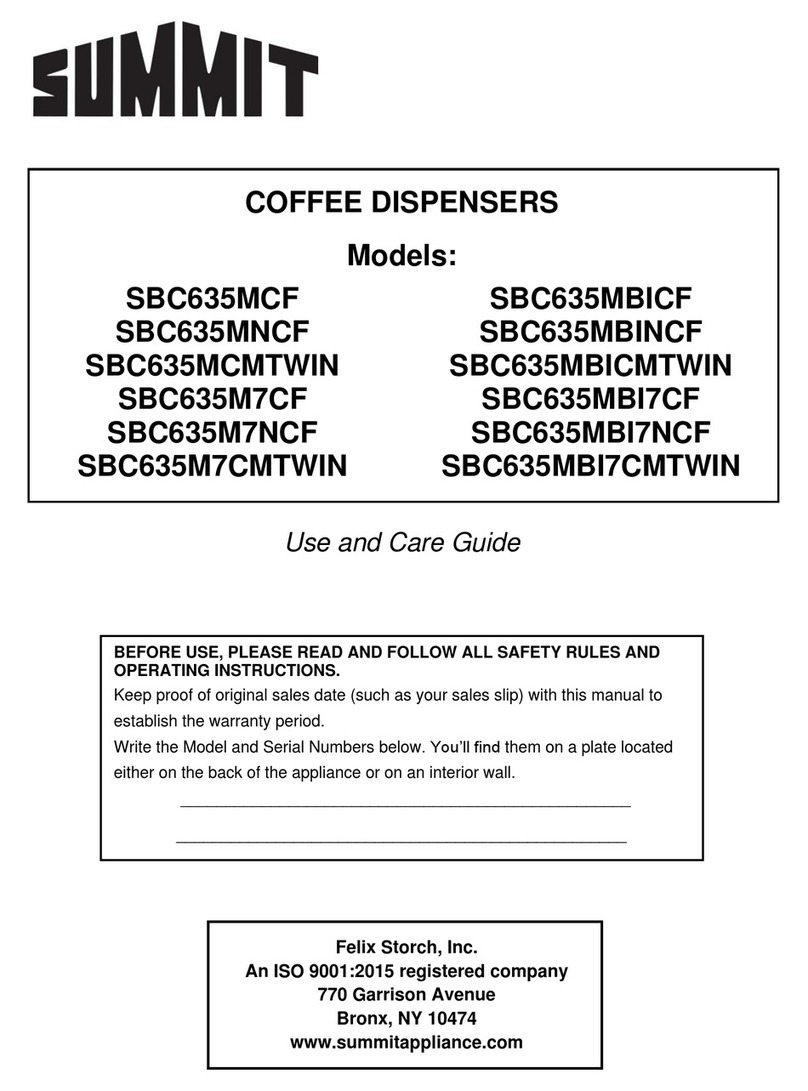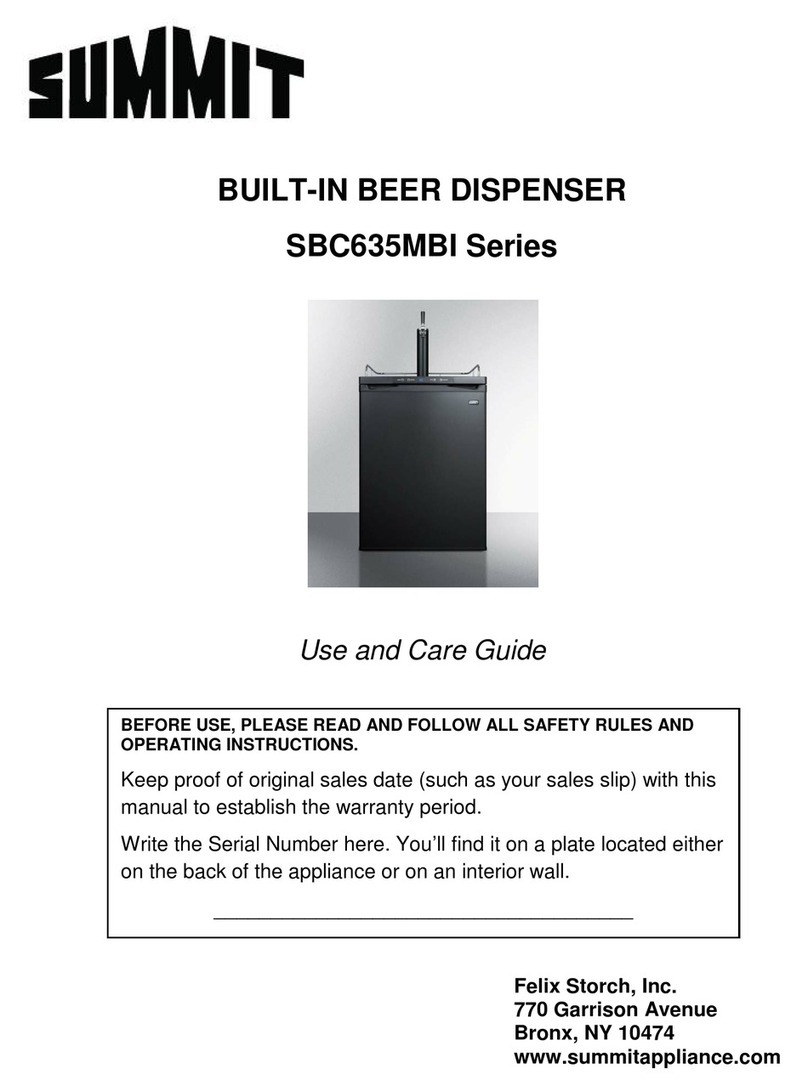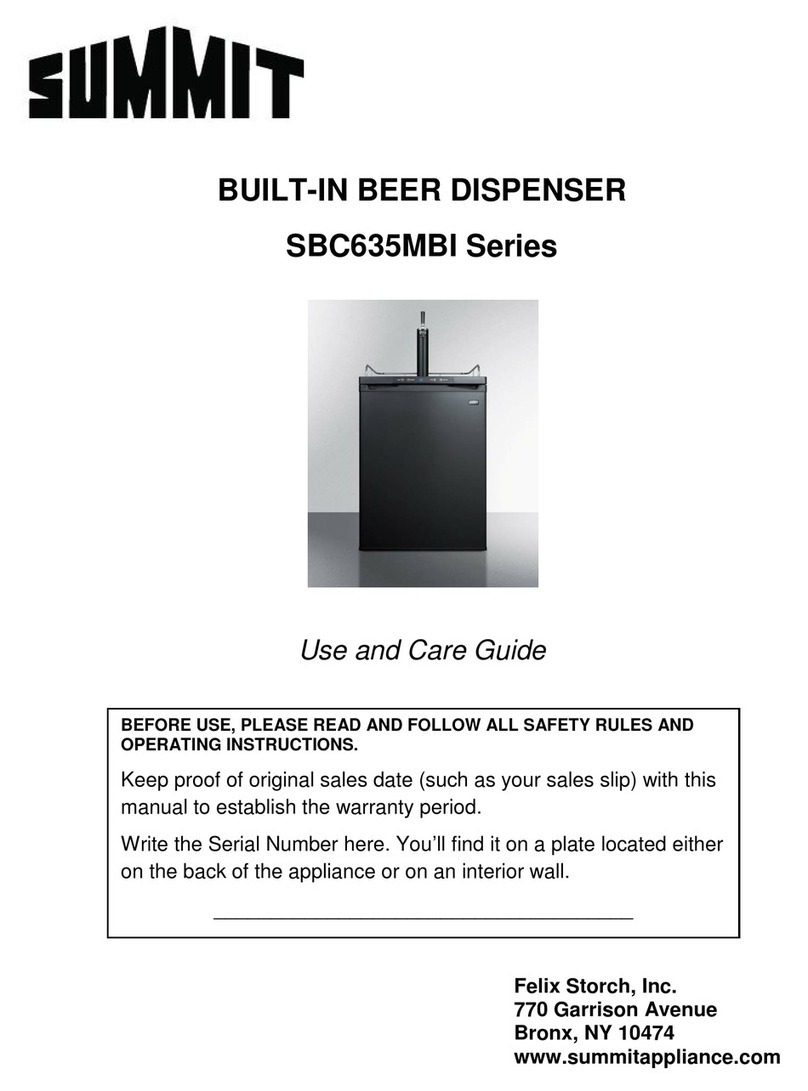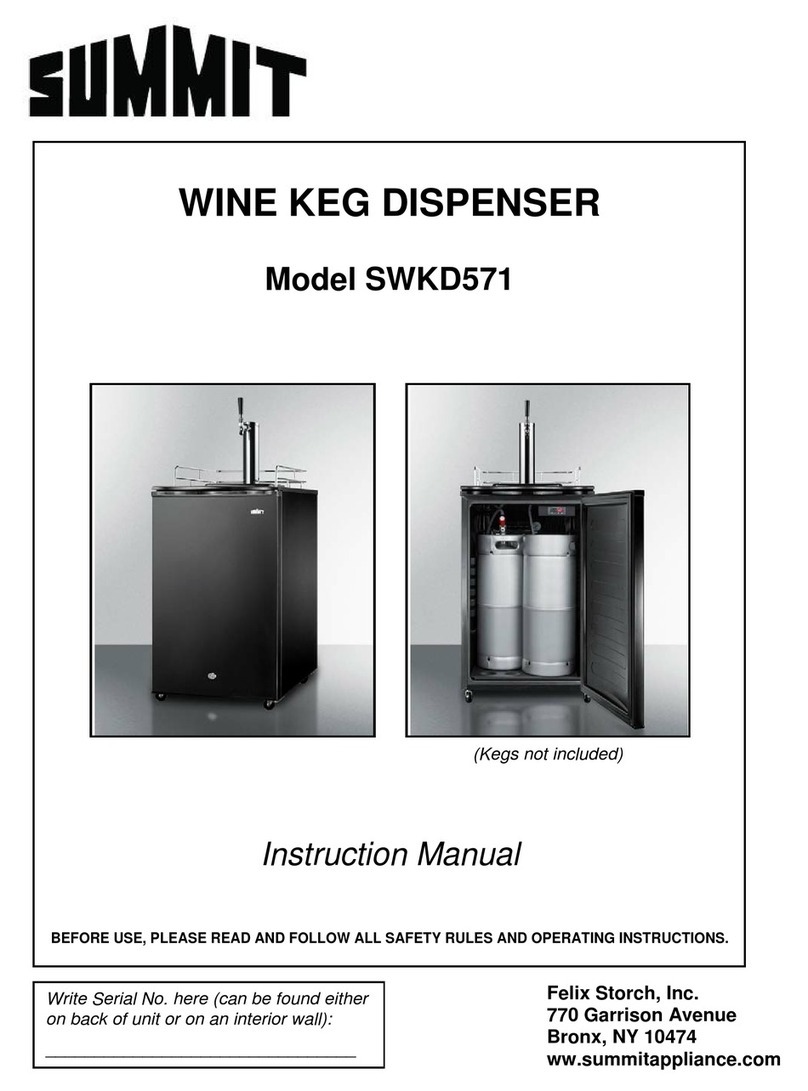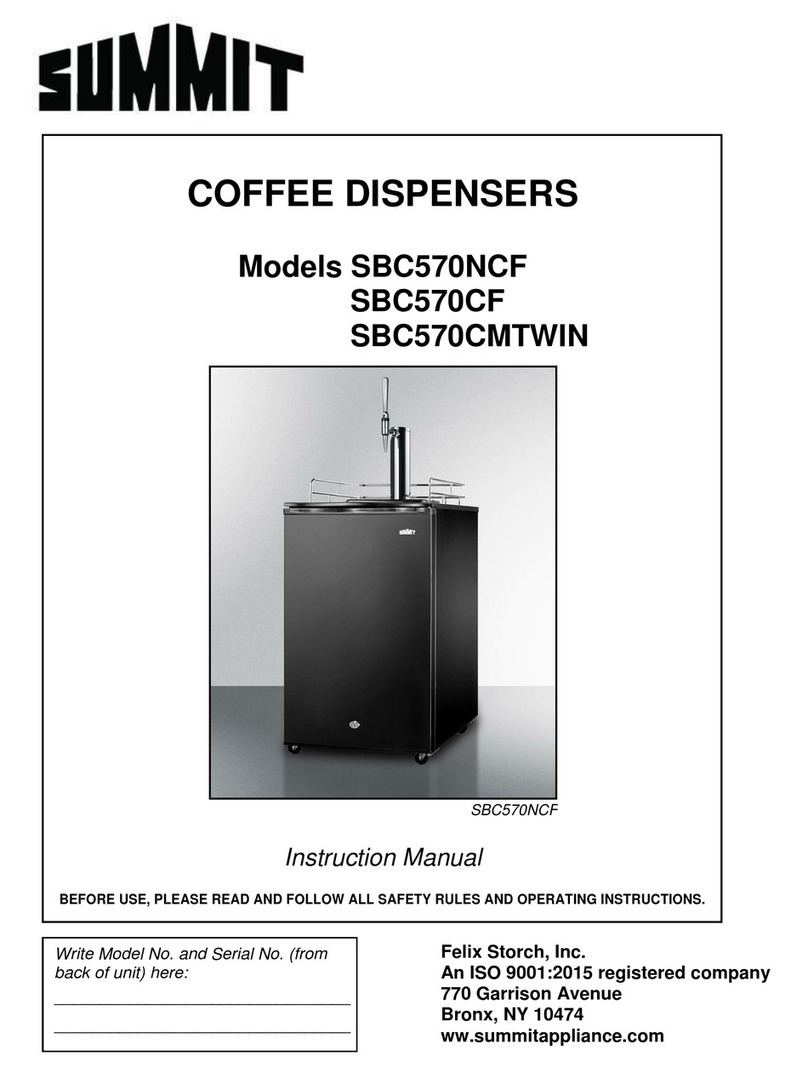
IMPORTANT SAFEGUARDS
WARNING!
To reduce the risk of fire, electric shock or injury when using this appliance,
follow these basic precautions:
1. Read all instructions before using the appliance.
2. The appliance must be correctly connected to the power supply.
3. Immediately replace worn power cords, loose plugs and faulty power outlets.
4. Do not operate your appliance in the presence of explosive fumes.
5. Disconnect the appliance from the power supply before cleaning or repairing it. Only
a qualified technician should repair it.
6. Never stand on top of or inside this appliance or swing on the door. Avoid putting
weight on top of the appliance.
7. To reduce likelihood of injury, do not let children play with this appliance.
8. Do not operate the valve control unless the cylinder is completely installed and
connected.
9. Do not attempt to repair or replace any part unless this is recommended in this Use
and Care Guide. Leave other service matters to qualified technical personnel.
10. Keep packing materials away from children as they could become a choking hazard.
11. Do not spray or flush the wine keg dispenser with water, and avoid keeping it in a
damp place since this could damage the electrical insulation.
12. This unit is intended for UPRIGHT, FREE-STANDING USE ONLY. Do not install in
a cabinet or enclosed spaces. Do not use under a bar or counter.
DANGER! Risk of child entrapment!
Child entrapment and suffocation are not problems of the past. Junked or
abandoned appliances are still dangerous, even if they will "just sit at the curb for
a few days."
Before discarding your old appliance:
Take off the door.
Leave the shelves in place so that children may not easily climb inside.
This appliance is CFC- and HFC-free and contains small quantities of Isobutane
(R600a) which is environmentally friendly, but flammable. It does not damage the
ozone layer, nor does it increase the greenhouse effect. Care must be taken during
transportation and setting up of the appliance that no parts of the cooling system are
damaged. Leaking coolant can ignite and may damage the eyes.
In the event of any damage:
- Avoid open flames and anything that creates a spark,
- Disconnect from the electrical power line,
- Air the room in which the appliance is located for several minutes, and
- Contact the Service Department for advice.
The more coolant there is in an appliance, the larger the room it should be installed
in. In the event of a leakage, if the appliance is in a small room, there is the danger of
combustible gases building up. For every ounce of coolant at least 325 cubic feet of
room space is required. The amount of coolant in the appliance is stated on the data
plate on the back of the appliance. It is hazardous for anyone other than an
Authorized Service Person to carry out servicing or repairs to this appliance.






